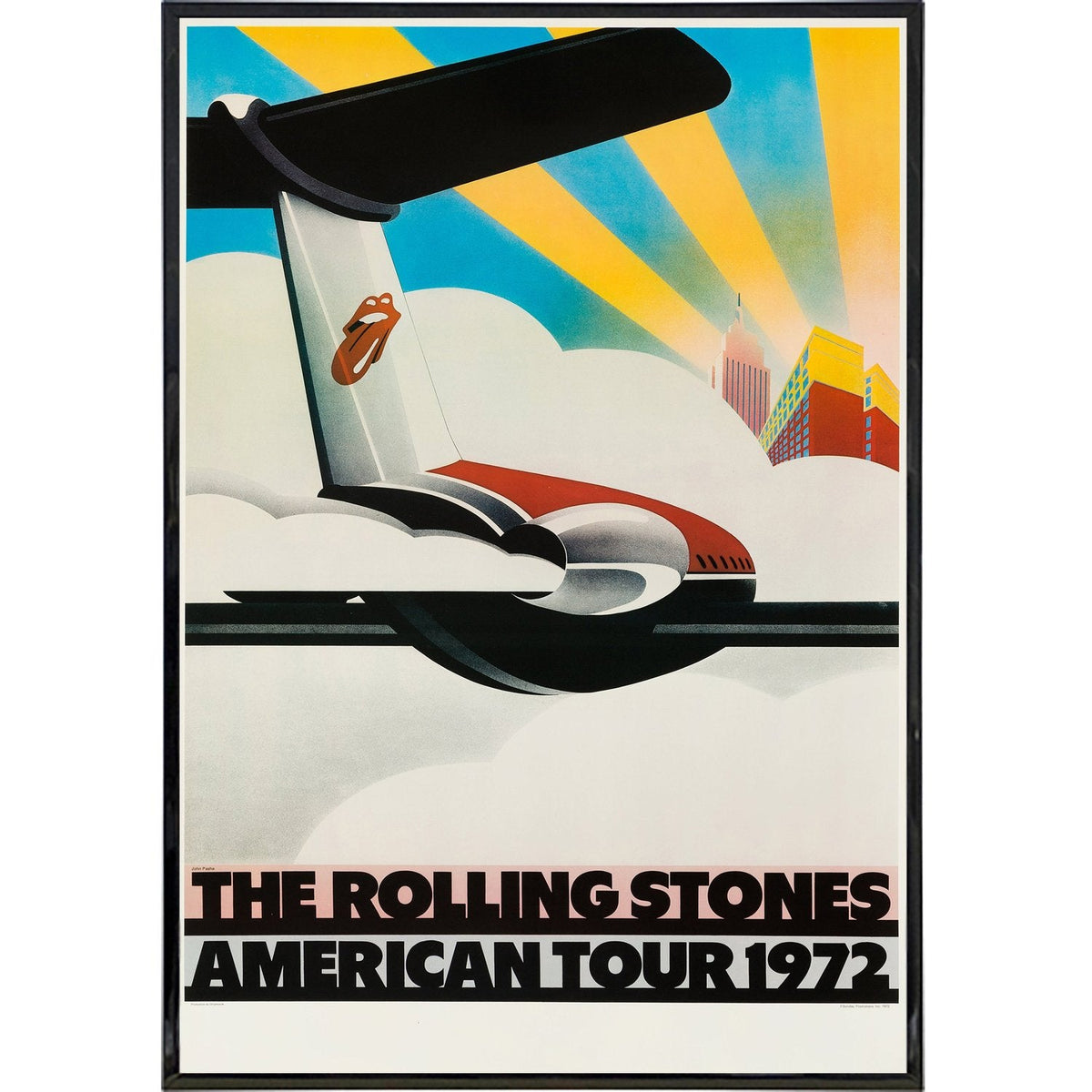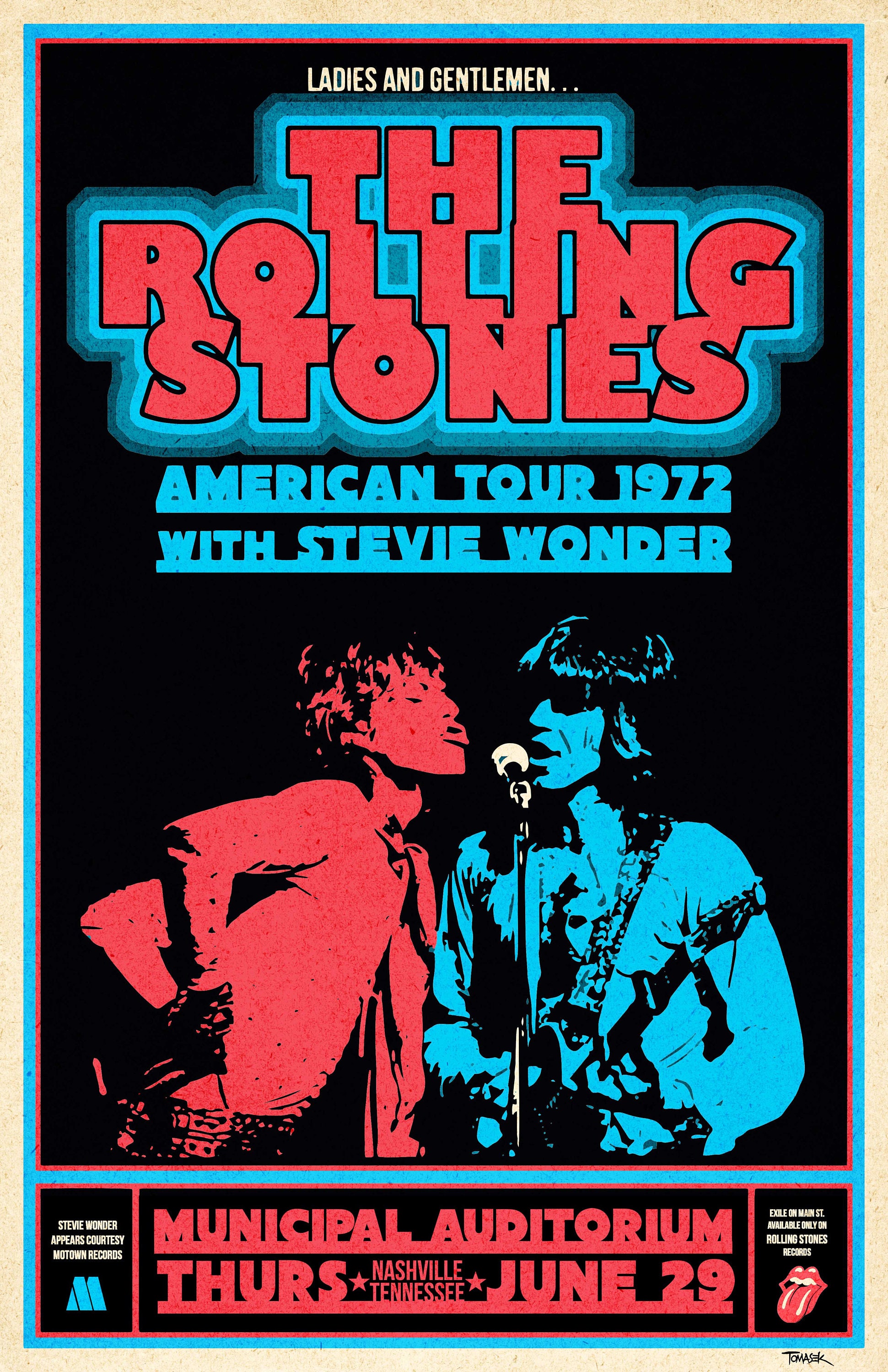1972 Rolling Stones Tour: The Legendary Rock Experience
When the Rolling Stones hit the road in 1972, they weren’t just playing gigs—they were creating history. The 1972 Rolling Stones Tour wasn’t your average rock tour; it was a spectacle, a cultural phenomenon, and a defining moment for rock ‘n’ roll. This wasn’t just about music—it was about attitude, rebellion, and the sheer power of rock. So, if you’ve ever wondered what made this tour so iconic, buckle up, because we’re diving deep into the madness, the magic, and the memories.
This tour wasn’t just about Mick Jagger strutting on stage or Keith Richards playing those legendary riffs. It was about an entire generation coming together to celebrate music, freedom, and the sheer joy of living in the moment. The 1972 Rolling Stones Tour was more than just a series of concerts—it was a movement.
From the outrageous stage setups to the unforgettable performances, this tour set the bar for what a rock show could be. But it wasn’t all glitz and glamour. Behind the scenes, there were stories of chaos, controversy, and even a little bit of controversy. So, let’s take a trip back in time and explore why this tour remains one of the most talked-about events in rock history.
- Elle King Movies The Ultimate Guide To Her Cinematic Journey
- Blank Magazine Cover Your Ultimate Guide To Designing Stunning Covers
Table of Contents
- Tour Overview: What Made It Special
- The Rolling Stones: A Brief Biography
- Setlist Highlights: The Songs That Defined the Tour
- The Venues: Where the Magic Happened
- Controversies and Challenges
- Cultural Impact: How the Tour Changed Music
- Fashion on Tour: The Style of the Stones
- Documenting the Tour: 'Gimme Shelter'
- Legacy: Why the Tour Still Matters Today
- The Fan Experience: What It Was Like to Be There
Tour Overview: What Made It Special
The 1972 Rolling Stones Tour was more than just a concert series; it was a celebration of rock ‘n’ roll at its rawest and most powerful. Known as the "Exile on Main St." tour, it marked a pivotal moment in the band’s career, showcasing their new album while solidifying their status as rock legends. The tour spanned across North America, with performances that left audiences in awe.
What set this tour apart was its sheer scale and ambition. The Rolling Stones pulled out all the stops, creating a live experience that was unlike anything seen before. From massive stage setups to elaborate costumes, every detail was designed to leave a lasting impression. But it wasn’t just about the visuals—the music itself was electrifying, with the band delivering performances that were both raw and polished.
Why Was the 1972 Tour So Iconic?
The tour’s iconic status can be attributed to several factors. First, there was the music. The band was in top form, delivering hits like "Brown Sugar," "Sympathy for the Devil," and "Tumbling Dice" with unmatched energy. Second, there was the spectacle. The Rolling Stones brought a level of production value to their live shows that no other band had attempted at the time. And finally, there was the cultural significance. This tour wasn’t just about music—it was about a generation coming together to celebrate freedom and rebellion.
- Jacqueline Toboni The Rising Star Whorsquos Captivating Hearts Worldwide
- Marilyn Monroe Engagement Ring The Iconic Love Story Behind The Sparkle
But it wasn’t all smooth sailing. The tour faced its fair share of challenges, from logistical issues to legal troubles. Despite these hurdles, the Rolling Stones persevered, delivering a series of performances that remain some of the most memorable in rock history.
The Rolling Stones: A Brief Biography
Before diving deeper into the 1972 tour, it’s worth taking a moment to understand the band itself. The Rolling Stones were formed in London in 1962, with founding members Mick Jagger, Keith Richards, Brian Jones, Bill Wyman, and Charlie Watts. Over the years, the band has undergone several lineup changes, but their core sound and spirit have remained intact.
The Rolling Stones are often referred to as "the world’s greatest rock ‘n’ roll band," and for good reason. With a career spanning over six decades, they’ve released countless hit songs, influenced generations of musicians, and become synonymous with rock ‘n’ roll culture. Their music has evolved over the years, but their commitment to authenticity and innovation has never wavered.
Band Members and Their Roles
Here’s a quick look at the key members of the Rolling Stones during the 1972 tour:
| Name | Role | Birthdate |
|---|---|---|
| Mick Jagger | Vocals | July 26, 1943 |
| Keith Richards | Guitar | December 18, 1943 |
| Bill Wyman | Bass | October 24, 1946 |
| Charlie Watts | Drums | June 2, 1941 |
| Mick Taylor | Guitar | January 17, 1949 |
Setlist Highlights: The Songs That Defined the Tour
No discussion of the 1972 Rolling Stones Tour would be complete without talking about the music. The setlist for this tour was a masterclass in rock ‘n’ roll, featuring a mix of classic hits and new material from their album "Exile on Main St." Here are some of the standout tracks:
- "Brown Sugar"
- "Sympathy for the Devil"
- "Tumbling Dice"
- "Honky Tonk Women"
- "Jumpin’ Jack Flash"
Each song was delivered with the kind of energy and intensity that only the Rolling Stones could bring. Fans were treated to extended jams, unexpected covers, and moments of pure rock magic. The band’s ability to adapt their music to the live setting was a testament to their skill and creativity.
The Venues: Where the Magic Happened
One of the things that made the 1972 tour so special was the venues. From massive arenas to intimate clubs, the Rolling Stones played a wide range of locations, each offering its own unique vibe. Some of the most memorable venues included:
- Madison Square Garden, New York City
- The Forum, Los Angeles
- Maple Leaf Gardens, Toronto
Each venue brought its own challenges and opportunities, but the Rolling Stones rose to the occasion every time. Their ability to connect with audiences, regardless of the setting, was a key factor in the tour’s success.
Controversies and Challenges
Of course, no tour is without its challenges, and the 1972 Rolling Stones Tour was no exception. The band faced numerous controversies during their travels, from legal issues to public backlash. One of the most infamous incidents occurred in Toronto, where the band was arrested for drug possession. Despite these setbacks, the Rolling Stones remained undeterred, using the controversies to fuel their rebellious image.
There were also logistical challenges, such as transporting massive stage setups and dealing with unruly crowds. But the band’s determination and professionalism ensured that the shows went on, no matter what.
Cultural Impact: How the Tour Changed Music
The 1972 Rolling Stones Tour had a profound impact on the music industry and popular culture. It set new standards for live performances, influencing countless bands and artists in the years that followed. The tour’s emphasis on spectacle and production value paved the way for the arena rock era of the 1970s and beyond.
But the tour’s influence extended beyond music. It became a symbol of the counterculture movement, representing a generation’s desire for freedom and self-expression. The Rolling Stones’ willingness to push boundaries and challenge norms helped shape the cultural landscape of the time.
Fashion on Tour: The Style of the Stones
Let’s not forget about the fashion. The Rolling Stones were known for their distinctive style, and the 1972 tour was no exception. From Mick Jagger’s flamboyant outfits to Keith Richards’ signature bandanas, the band’s fashion choices were as iconic as their music. Their style was a reflection of their rebellious spirit and their commitment to individuality.
Some of the standout looks from the tour included:
- Mick Jagger’s jumpsuits and platform boots
- Keith Richards’ denim jackets and leather trousers
- Bill Wyman’s tailored suits
These outfits became a part of the Rolling Stones’ legacy, influencing fashion trends for decades to come.
Documenting the Tour: 'Gimme Shelter'
No discussion of the 1972 Rolling Stones Tour would be complete without mentioning the documentary "Gimme Shelter." Directed by Albert and David Maysles, this film captured the essence of the tour, showcasing the band’s electrifying performances and the chaos that surrounded them. The documentary also included footage from the infamous Altamont Free Concert, which marked a turning point in the band’s career.
"Gimme Shelter" remains one of the most important rock documentaries ever made, offering a behind-the-scenes look at the Rolling Stones at their peak. It’s a must-watch for any fan of the band or rock ‘n’ roll in general.
Legacy: Why the Tour Still Matters Today
Fast forward to today, and the 1972 Rolling Stones Tour remains a touchstone for rock ‘n’ roll fans around the world. Its influence can be seen in everything from modern concert productions to the music of contemporary artists. The tour’s legacy lies in its ability to capture the spirit of a generation and to inspire future generations to embrace the power of rock ‘n’ roll.
For fans who were lucky enough to witness the tour firsthand, it remains a cherished memory. For those who weren’t, the tour serves as a reminder of what rock ‘n’ roll can be—a celebration of life, freedom, and the human spirit.
The Fan Experience: What It Was Like to Be There
Finally, let’s talk about the fans. What was it like to be in the audience during the 1972 Rolling Stones Tour? According to those who were there, it was nothing short of magical. Fans describe the energy of the shows as electric, with the band feeding off the crowd’s enthusiasm and vice versa.
One fan recalled seeing the band at Madison Square Garden: "It was like nothing I’d ever experienced before. The music was so loud, so powerful, and Mick Jagger was mesmerizing. It was like being part of something bigger than yourself." These kinds of stories are what make the 1972 tour so legendary.
Conclusion
The 1972 Rolling Stones Tour was more than just a series of concerts; it was a cultural phenomenon that left an indelible mark on rock ‘n’ roll history. From the music to the fashion, from the controversies to the cultural impact, this tour was a testament to the power of rock ‘n’ roll. So, whether you were there or not, the legacy of this tour lives on, inspiring fans and musicians alike.
If you’ve enjoyed this deep dive into the 1972 Rolling Stones Tour, why not share your thoughts in the comments? Or better yet, check out some of our other articles on rock history. The story of rock ‘n’ roll is far from over, and we’d love to have you along for the ride!



Detail Author:
- Name : Mr. Santiago Schmidt DVM
- Username : arvel.breitenberg
- Email : ajacobson@torphy.com
- Birthdate : 1976-01-26
- Address : 9799 Eldred Burgs Apt. 350 Hoegerstad, AK 16595-9247
- Phone : 623-725-4034
- Company : Blick, Jakubowski and Leannon
- Job : Waste Treatment Plant Operator
- Bio : In magni perspiciatis a ad voluptas voluptatem architecto libero. Voluptatem hic sit commodi nihil illum ullam vitae ab. Animi rerum autem laboriosam aut. Sed eos ab et voluptatem ut ab.
Socials
twitter:
- url : https://twitter.com/savion_trantow
- username : savion_trantow
- bio : Consequatur debitis fugiat ut ut temporibus enim. Aliquam consectetur aperiam nihil similique.
- followers : 1311
- following : 1062
facebook:
- url : https://facebook.com/savion_xx
- username : savion_xx
- bio : Voluptas voluptate voluptatem est quas quis tempora perspiciatis.
- followers : 4972
- following : 1878